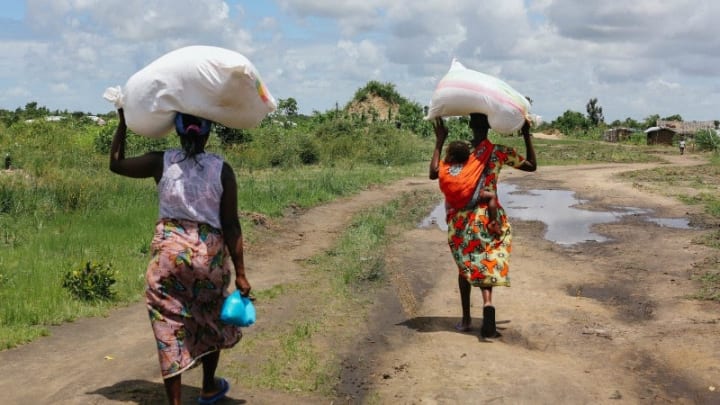
Food security leaders warn of a “hunger pandemic,” aid experts issue a cloudy forecast for official development assistance, and COVID-19 triggers the World Bank’s maligned pandemic bonds. This week in development:
The COVID-19 pandemic threatens to turn a bleak year for global hunger into a disastrous one, food security experts are warning. On Tuesday, the Global Network Against Food Crises reported that 135 million people in 55 countries and territories were suffering from acute food insecurity — but food security leaders warned that number could double due to the disruption caused by the global crisis, placing the world on the brink of a “hunger pandemic,” according to World Food Programme Executive Director David Beasley. “Before the coronavirus even became an issue, I was saying that 2020 would be the worst humanitarian crisis since World War II for a variety of reasons,” Beasley said Tuesday. Now that the pandemic is disrupting supply chains, straining national budgets, restricting trade, and harming livelihoods, the food security picture looks much worse. Most of the countries surveyed in the “Global Report on Food Crises” lack the means to provide both lifesaving humanitarian relief in response to COVID-19 and livelihood and income protections for their citizens. Those shortfalls could, in turn, affect international humanitarian resources, especially now that donor countries are also experiencing severe adverse economic impacts from the pandemic.
The World Bank’s controversial Pandemic Emergency Financing Facility, or PEF, is set to pay out now that “all activation criteria including outbreak size, spread and growth have been met,” according to an update on the institution’s website. The final trigger required to initiate the insurance scheme’s disbursement — an exponential growth rate in low- and middle-income countries where the bank lends — was met on March 31, and the “third-party calculation agent” overseeing the status of those criteria, a risk-modeling company called AIR Worldwide, informed the financing facility’s steering body of that status on April 17. That body, which includes Australia, Germany, Japan, the World Health Organization, UNICEF, the World Bank, and two countries eligible for funding from the International Development Association — currently Haiti and Liberia — will meet to determine how roughly $195.84 million from the insurance bonds and swaps will be allocated to IDA countries. The PEF, which was created after the Ebola epidemic in West Africa, has faced significant criticism in recent years for failing to issue payments during subsequent outbreaks due to its stringent criteria.
Development funding experts are shying away from making predictions about what the future holds for international aid levels. Last week, the Organisation for Economic Co-operation and Development released figures for 2019 official development assistance funding and found that 30 of the world’s top donors increased their ODA spending by 1.4% to $152.8 billion. The OECD called on donors to maintain their assistance levels in the face of the COVID-19 pandemic, but members of the international body cautioned that with numerous countries facing their own domestic crises, the future is hard to predict. “Everybody wants to know what is going to happen to ODA levels in 2020 and beyond, and I must be very, very honest with you, the answer is: We simply do not know,” said Susanna Moorehead, chair of the OECD Development Assistance Committee. Moorehead noted that some OECD countries set their development assistance levels as a percentage of gross national income, and with GNI expected to decrease in most places, ODA levels would likely follow. In light of the pandemic, donor countries need to “move beyond merely protecting current aid budgets,” said Jan van de Poel, policy and advocacy manager at the European Network on Debt and Development.




